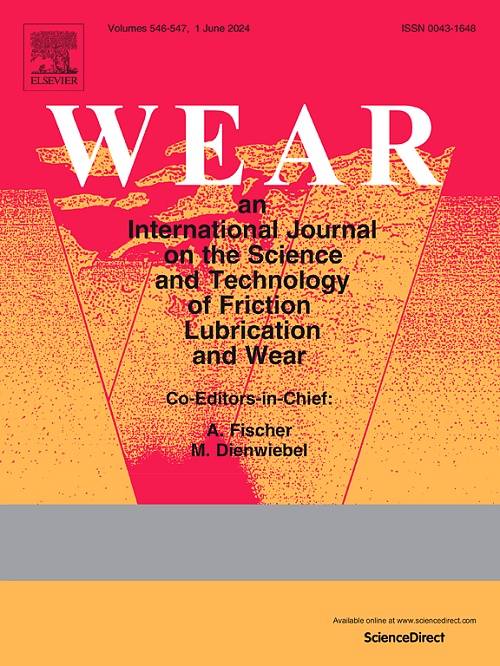一种考虑中心距误差的齿轮齿面磨损计算方法
IF 6.1
1区 工程技术
Q1 ENGINEERING, MECHANICAL
引用次数: 0
摘要
在齿轮传动中,制造/安装误差和轴承径向间隙导致中心距离的变化,从而改变齿面接触特性,进而影响齿面磨损行为和疲劳寿命。建立了考虑制造/安装误差和轴承径向间隙的齿轮中心距误差模型,建立了考虑中心距变化的齿轮副非线性动力学模型。结合齿轮啮合原理和赫兹接触理论,得到了动载荷作用下齿面接触压力的分布。基于单点观察法推导了齿轮副啮合过程中接触点间滑动距离的通用计算模型,并基于Archard黏着磨损模型确定了考虑中心距离误差的准静态载荷和动态载荷作用下齿面磨损深度。研究发现,在动载荷作用下,齿面磨损深度围绕准静态载荷作用下的磨损深度分布波动。当考虑制造/安装误差和轴承径向间隙引起的中心距误差时,随着实际中心距的增加,驱动齿轮齿尖处的最大磨损深度增加,而齿根处的最大磨损深度减小。对于从动齿轮,齿尖处最大磨损深度随实际中心距离的增加而减小,齿根处最大磨损深度随实际中心距离的增加而增大。研究结果可为受中心距误差影响的小模数齿轮副的强度增强设计提供依据。本文章由计算机程序翻译,如有差异,请以英文原文为准。
A calculation method of gear tooth surface wear considering the center distance error
In gear transmission, manufacturing/installation error and bearing radial clearance led to the variation of the center distance, changing the contact characteristic and subsequently affecting the wear behavior and the fatigue life of the tooth surfaces. In this work, a center distance error model of the gears with the manufacturing/installation error and the bearing radial clearance was derived, and a nonlinear dynamic model of the gear pair considering the variation of the center distance was established. The contact pressure distribution on the tooth surfaces under the dynamic load was obtained by combining the gear meshing principle and the Hertzian contact theory. A general calculation model of the sliding distance between the contact points in the meshing process of the gear pair was derived based on the single point observation method, and the wear depths of the tooth surfaces under the quasi-static and the dynamic load considering the center distance error were determined based on the Archard's adhesive wear model. The presented work found that the wear depth of the tooth surface under the dynamic load fluctuates around the wear depth distribution under the quasi-static load. When considering the center distance error caused by the manufacturing/installation error and the bearing radial clearance, the maximum wear depth at the tooth tip of the driving gear increases as the actual center distance increases, while the maximum wear depth at the tooth root decreases. As for the driven gear, the maximum wear depth at the tooth tip decreases as the actual center distance increases, while the maximum wear depth at the tooth root increases with the actual center distance. The conclusions in this research work can provide a basis for the strength enhancement design of the gears which performance is affected by the center distance error such small-modulus gear pair.
求助全文
通过发布文献求助,成功后即可免费获取论文全文。
去求助
来源期刊

Wear
工程技术-材料科学:综合
CiteScore
8.80
自引率
8.00%
发文量
280
审稿时长
47 days
期刊介绍:
Wear journal is dedicated to the advancement of basic and applied knowledge concerning the nature of wear of materials. Broadly, topics of interest range from development of fundamental understanding of the mechanisms of wear to innovative solutions to practical engineering problems. Authors of experimental studies are expected to comment on the repeatability of the data, and whenever possible, conduct multiple measurements under similar testing conditions. Further, Wear embraces the highest standards of professional ethics, and the detection of matching content, either in written or graphical form, from other publications by the current authors or by others, may result in rejection.
 求助内容:
求助内容: 应助结果提醒方式:
应助结果提醒方式:


